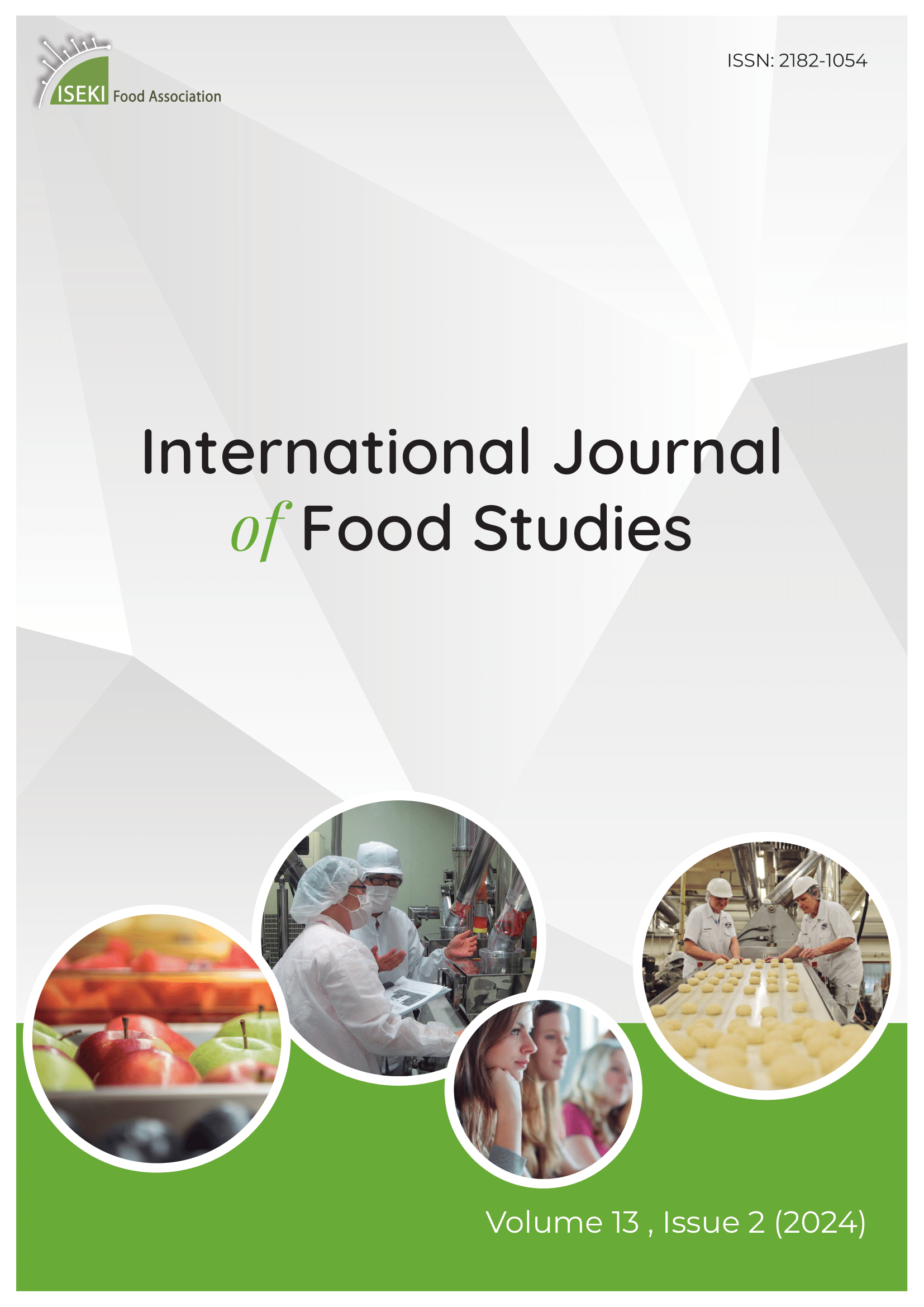
More articles from Volume 9, Issue 3, 2020
Optimization of pressure parboiling conditions and pre-conditioned moisture content of brown rice (unpolished rice) for microwave puffing and its comparison with hot sand bed puffing
A numerical model for studying the thermal denaturation-aggregation of whey proteins under continuous thermal processing
The effect of in vitro enzyme digestion on antioxidant and anticholinesterase potential of tomato (Lycopersicum esculentum) fruit and two commercially processed tomato pastes
Evaluation of the effectiveness of cereal bran extract for sunflower oil stability during frying
Textural, rheological and sensory properties of spreadable processed goat cheese
Various factors affect product properties in apple cider production
 ,
,
Faculty of Chemistry, Biotechnology and Food Science, Norwegian University of Life Sciences , Ås , Norway
Faculty of Chemistry, Biotechnology and Food Science, Norwegian University of Life Sciences , Ås , Norway
Faculty of Chemistry, Biotechnology and Food Science, Norwegian University of Life Sciences , Ås , Norway
Published: 18.01.2020.
Volume 9, Issue 3 (2020)
pp. 84-96;
Abstract
Different parameters in cider processing were evaluated using different cultivars of Norwegian-grown table apples measuring the quality of cider. Seven different apple cultivars were mixed into four different apple juice mixtures. In this experiment, we evaluated the maturation of the apples along with commercial cider yeast and spontaneous alcoholic fermentation. Other parameters were fermentation temperature and filtration along with content of polyphenols, organic acids and volatile compounds that was analysed as an effect of the fermentation process. Succinic acid was the major organic acid in apples and ciders. The different apple juice mixtures did not reveal pyruvic and acetic acids but they appeared in relatively high amount in the ciders. The level of citric acid increased from apple to cider. Chlorogenic acid was the major polyphenolic compound found from 13-109 mg L-1 in the apple juice mixtures and between 27-200 mg L-1 in the ciders. The higher alcohol 3-methyl-1-butanol appeared in relatively large amounts in all the ciders (91-166 mg L-1). The average content of acetaldehyde increased during the fermentation process, from apple juice mixtures 2.75 mg L-1 and 14.65 mg L-1 in the ciders. The content also increased for ethyl acetate with levels at 0.1 mg L-1 in the apple juice mixture and 20 mg L-1 in the cider. In the sensory evaluation experiment, the ciders produced from the apple cultivars Aroma, Gravenstein and Summerred got higher scores in fruitiness and complexity compared to the other apple juice mixtures.
Keywords
References
Citation
Copyright

This work is licensed under a Creative Commons Attribution-NonCommercial-ShareAlike 4.0 International License.
Article metrics
The statements, opinions and data contained in the journal are solely those of the individual authors and contributors and not of the publisher and the editor(s). We stay neutral with regard to jurisdictional claims in published maps and institutional affiliations.






